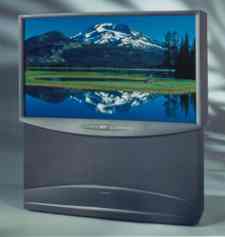|
|


TechnoFILE is copyright and a registered trademark © ® of
Pandemonium Productions.
All rights reserved.
E-mail us Here!
 TechnoFILE's Digital Camera Buyers GuideA Pixel's Worth a Thousand Words?Conventional camera makers may shutter to think that digital photography is giving them a run for your money, but it's true. Digital cameras are hot - and deserve to be. They're fun, easy to use and give you instant results. But what should you look for in one? Read on Most manufacturers of computers, and film cameras have now embraced the digital photo medium, including Hewlett Packard, Canon, Kodak, Fujitsu, Apple, Sony, and Casio. Digital cameras don't use film, they record images onto memory bank - from little memory cards to floppy disks. Rather than run down to the drug store to have your prints developed, you merely transfer the shots to your computer, where they show up as image files you can use in desktop publishing or graphics programs - and you can e-mail them to friends and relatives. Captured photos, can be edited to your heart's content; including changing the brightness, contrast and color balance, eliminating red-eye and removing zits faster than you can say "Clearasil." Most cameras come with software that lets you preview your pictures and download only the ones you want, as well as performing basic manipulation. Digital cameras aren't cheap, but they save you money on film and developing, and (for those who use pics online) prevent the hassles and/or cost of scanning. Some models let you view the pictures you've taken on a built in LCD screen, so if you don't like the picture you've just taken, you can erase it and shoot again. This saves storage space in the camera and download time to your PC. Digital pictures are fine for most applications, but if you need fine detail and true color for professional reproduction, a film camera - or a really high end (read "multiple thousand dollar) professional digital camera - is your best bet. Home/small business digital cameras cost up to about $1,000US, while the big time professional models run as high as $20,000. Digital cameras are also relatively slow in recording the image, compared with their film brethren, so they don't work well for action photography or times when you need to shoot quickly. The quality of a digital camera depends on various parameters, including resolution, color depth, capacity, optics and convenience features. As usual, the more you want the more you'll have to pay. Here are a few things to look for in your digital camera:
Most cameras have
a built-in automatic flash, which is nice. A lovely convenience feature is the abovementioned liquid crystal display screen, which lets you second guess your work. On some models, the LCD takes the place of the viewfinder. This lets you see exactly what you're shooting, but tends to wash out in bright sunlight. Other cameras have an optical viewfinder and an LCD. Good luck!
|
|
|
| Support TechnoFile via Paypal |
| TechnoFILE's
E-letter We're pleased to offer our FREE private, subscription-based private E-mail service. It's the "no brainer" way to keep informed. Our Privacy Policy |